I'm really pumped to be teaching at Quilt Con in February! SOFT CRITICISM - space…
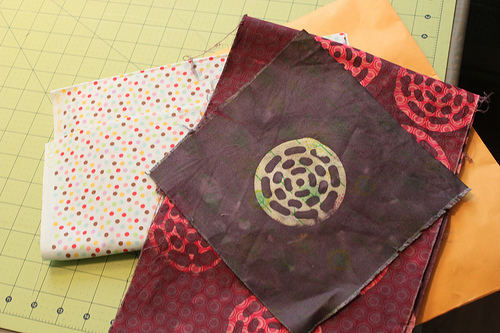
batik on quilting fabric
I can’t believe this worked!
I batiked on conventional quilting fabric!!! So exciting!!!
This may be a case of me mis-remembering things read long ago, but I swear that when I was first leaning to use wax resist (i.e., batik) to alter fabric, it was made clear that I needed to use pimatex. Pimatex, pimatex, pimatex. Because it has a higher thread count and will therefore be able to expel the wax effectively. Pimatex. Buy plain white pimatex and go from there. Quilting cotton won’t work.
This is frustrating because it means you are always starting from a bright white and completely blank canvas pimatex. It means that unless you want the shapes you wax to be white…like these which I made in 2010…
(which looks great, but isn’t always what you want!)
You have to dye the fabric, then wax it, then dye it again.
I thought I had found a way to lighten the burden of dyeing the fabric when I discovered that Robert Kaufman makes some colored pimatex fabrics. After trying and failing to find these fabrics online and in local shops, I asked my friend Brenda (of Pink Castle Fabrics) if she could order a bolt for me through one of her distributors. I picked a the color “Steel” because it looked lovely and also neutral enough that if for some reason pimatex isn’t pimatex (you never know), I wouldn’t mind having 10+ yards of the stuff.
Well, when I my Steel Pimatex arrived, I decided to do a quick, sloppy trial of it. Feeling experimental, I also grabbed a print from an Art Gallery fabric line because I sweat their base cloth is Pimatex. I also grabbed a scrap of quilter’s cotton I had laying about. Just to see.
I waxed everything up (I use the mix that Malka Dubrawsky recommends in her book Color Your Cloth . Which, if memory serves is 50% beeswax & 50% parrafin).
. Which, if memory serves is 50% beeswax & 50% parrafin).
The picture below is of the three types of fabric.
1. The light gray is the Robert Kaufman Pimatex in steel.
2. The green tree fabric is from Erin McMorris’s Wildwood collection, manufactured by Free Spirit. I picked it because it felt like a typical quilter’s cotton to me.
3. Finally, the bright pink print is from Art Gallery fabrics; it feels like Pimatex to me.
1. The light gray is the Robert Kaufman Pimatex in steel.
2. The green tree fabric is from Erin McMorris’s Wildwood collection, manufactured by Free Spirit. I picked it because it felt like a typical quilter’s cotton to me.
3. Finally, the bright pink print is from Art Gallery fabrics; it feels like Pimatex to me.
I also waxed some additional pieces of the steel pimatex fabric to try out some odd metal bits that I had laying around. I wanted to see if these bits and bobs would would work with the wax and what pattern they would make.
Eventually, I threw everything into either an eggplant or a charcoal gray dye bath.
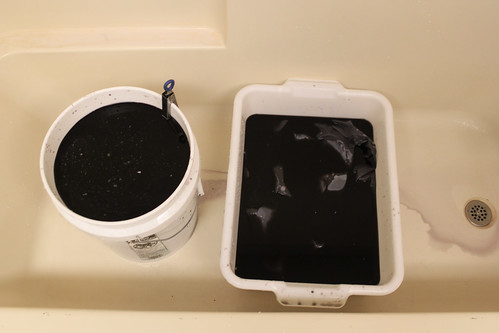
And then it came time to rinse the fabric and boil out the wax.
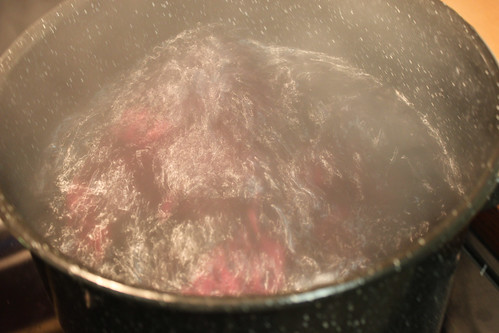
This is the step that isn’t supposed to work for quilter’s cotton.
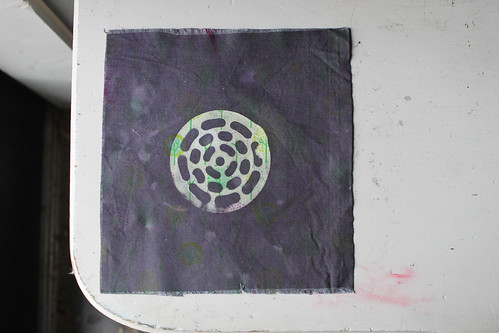
But it did! All of the wax came out!
I just wish I had stirred the dye bath more often. I was really rather convinced that this wasn’t going to work, so I didn’t stir the dye very much, which is why that dye job looks so uneven. Oh well!
The pink print came out nicely, too. Not sure what I’ll be using this for!
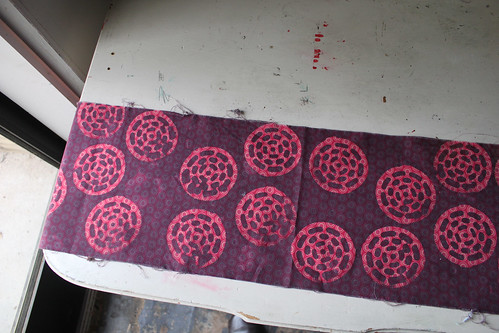
The steel pimatex also worked. My experiments with the different tools + the half-assedness with which I stirred the dye + the colors I used when dyeing lead to a sort of gloomy creepy effect.
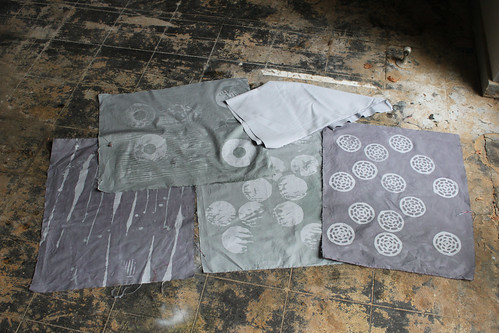
I’ve decided to run with it and am making a little Halloween lap quilt.
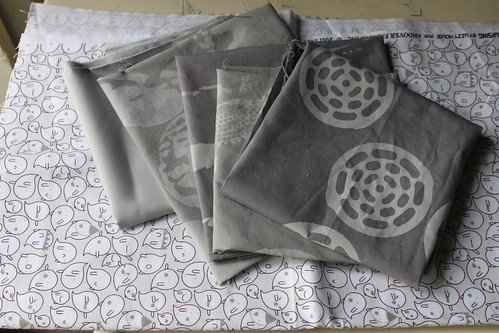
I love that the little ghosts match so well!
Spooky, right? (Please excuse the lighting below, the color’s aren’t quite true).
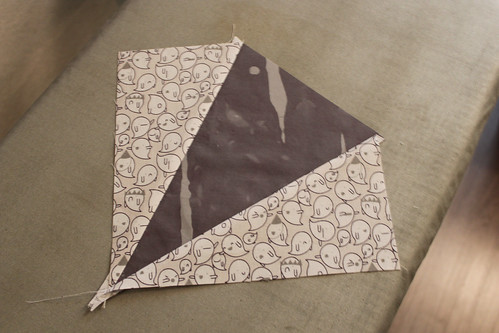
Anyway, I’m pumped to try out batik on more base cloths to see what it’s limits are. It would be so awesome if I could batik right onto Kona cottons (or Bella or any of the big lines)! Next time, I’ll be better about stirring that dye bath!
This Post Has 9 Comments
Comments are closed.

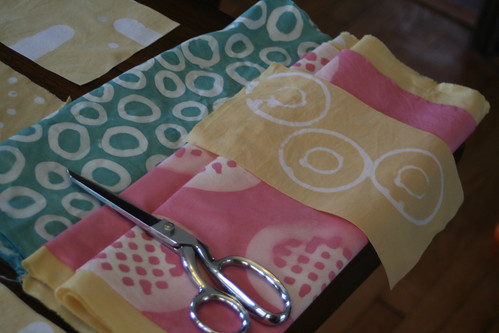
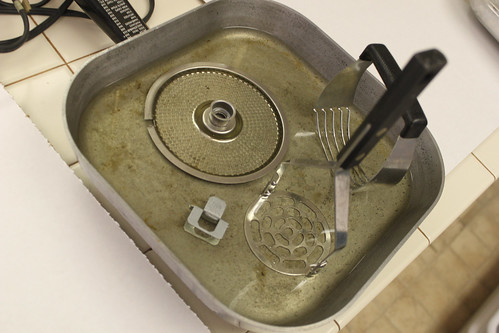

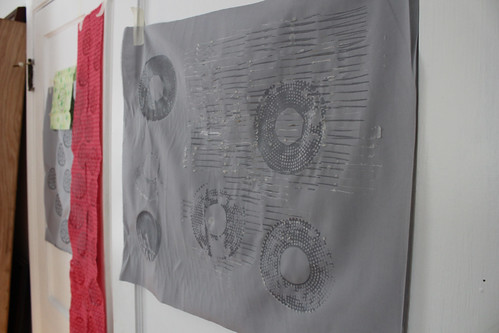


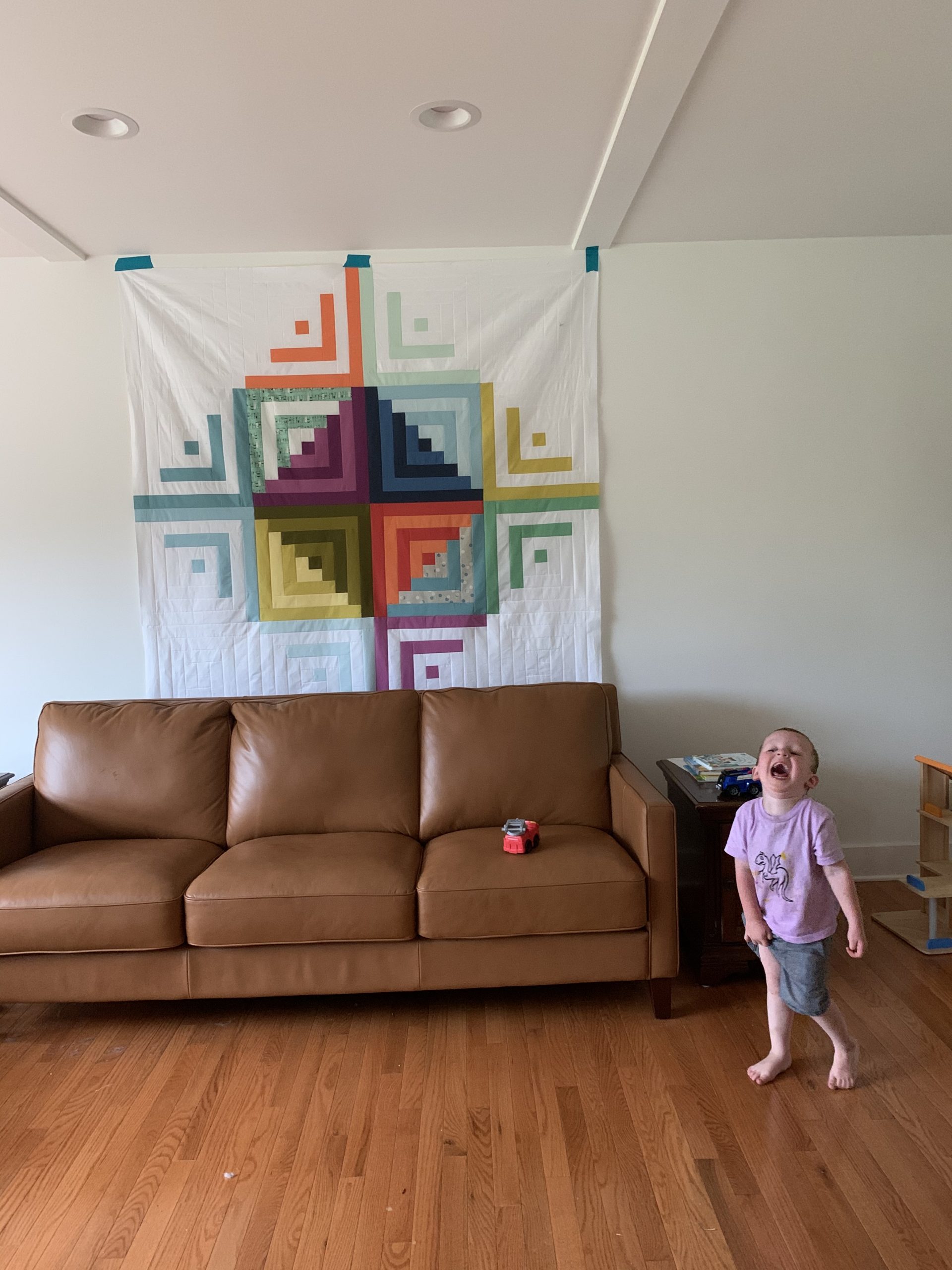
Very interesting experiment! Personally I like the uneven background from not stirring. Thanks for sharing.
Yes, the uneven background is kinda cool…I can work with it for sure!
I think the main concerns of using preprinted cottons are some may not absorb the wax and dye due to finishes on the fabric, retention of dye due to chemicals already in or not in the fabric (pfd), and if the fabric is too thick the wax may not penetrate completely through the back. I usually play by the rules to learn a technique, and then see what else I can do. Knowing the basics can help prevent simple errors that will ruin the attempt. Pushing the boundaries is what art and creativity are all about! The only rules I usually hold to are safety rules…gloves, mask (powder dye), and eye protection, etc.
Looks like you had fun!
I love this comment! Thanks for sharing this information and your perspective!
I like the little ghosts mixed with the grey batik. Looks like it could be considered ecto-plasm maybe?! Very cool.
Totally ectoplasm-like! Love that description!
Oh I loooove experiments! It's like science class all over again. So much fun!
🙂
I'd never heard of not dying on cotton prints – although I haven't done a lot of dyeing or reading about dying. I LOVE how the pink fabric turned out! That's definitely a keeper!